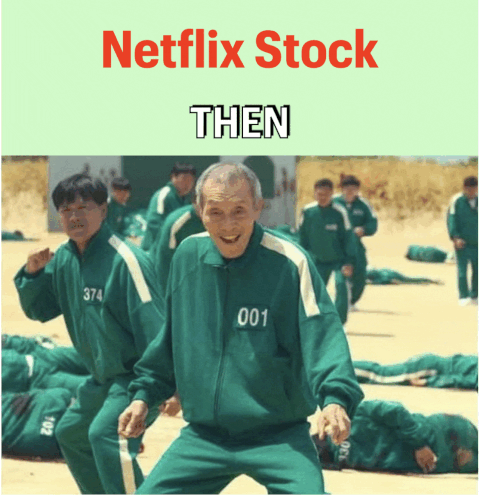To fans of the Hollywood actor Harrison Ford, the title of this edition of the newsletter may remind them of the 1994 action thriller. But obviously, we are not here to talk about a three-decade-old American movie.

Welcome to Kuvera’s weekly wrap on the most critical developments in business, finance and markets in India.
The “clear and present danger” that we are talking about is far more serious. The phrase made headlines this week when Pierre‑Olivier Gourinchas, chief economist of the International Monetary Fund, used it to describe the risk the global economy faces from a surge in inflation, especially after Russia’s invasion of Ukraine.
“Inflation has become a clear and present danger for many countries,” he said at a press briefing after the IMF released its April 2022 World Economic Outlook report. “Even prior to the war, it surged on the back of soaring commodity prices and supply‑demand imbalances… War‑related disruptions amplify those pressures.”
Gourinchas noted that inflation in the US and some European countries had reached its highest level in more than 40 years and said the IMF now projects inflation will remain elevated for much longer.
“The risk is rising that inflation expectations drift away from central bank inflation targets, prompting a more aggressive tightening response from policymakers,” he warned.
But surely, his warning relates to the advanced economies of North America and Western Europe, right? Wrong.
The warning is as relevant for India as any other country. In fact, inflation in India is already above the Reserve Bank of India’s target levels. Retail inflation for March was at a 17-month high of 6.95% while wholesale inflation was 14.55%, staying at double-digit levels for 12 months. The RBI’s medium-term target, meanwhile, is 4% with an upper limit of 6%. And the situation will likely get worse, as we pointed out in the previous edition of this newsletter.
Growth Hiccups

The inflation warning wasn’t the only red signal that the IMF flashed. It also slashed its forecast for India’s GDP growth for 2022-23 and 2023-24, to 8.2% and 6.9% from its January estimates of 9% and 7.1%, respectively.
That’s not all. The IMF cut global growth projections to 3.6% in 2022 and 2023, compared with 4.4% and 3.8% for 2022 and 2023 forecast in January, due to the impact of the Russia-Ukraine war.
Gourinchas said global economic prospects have been “severely set back” and the war adds to the series of supply shocks that have struck the global economy in recent years. “Like seismic waves, its effects will propagate far and wide—through commodity markets, trade, and financial linkages,” he said.
The RBI, too, warned of the war’s impact on India. In its monthly bulletin released this week, the central bank said that India is experiencing “tremors” from these global developments. “The fallout of the war and retaliatory sanctions is already evident in inflation prints and balance of payments developments,” it said.
The concern comes after the RBI last week kept its benchmark interest rates unchanged but signalled a shift in its policy stance by gradually withdrawing excess liquidity to fight inflation. This has already started making an impact.
Higher EMIs
While the RBI hasn’t yet directly increased interest rates, banks have taken the cue and started doing so.
State Bank of India this week sounded the bugle on reversal of the low interest rate regime by raising its marginal cost of funds-based lending rate, or MCLR, by 10 basis points.
While this will lead to only a small rise in EMIs of most borrowers, its signalling is important. As the country’s largest lender, SBI is closely watched—and followed—by other banks. Not surprisingly, Bank of Baroda, Axis Bank, Federal Bank and Kotak Mahindra Bank also increased their MCLR by up to 10 bps this week.
Effectively, what this means is your EMIs on everything from home loans to auto loans and personal loans will rise. And this will only worsen in coming months when the RBI itself increases its benchmark rates.
Corporate Earnings
Moving on to corporate news, the quarterly earnings season is gaining momentum. Last week, India’s two biggest IT companies, Tata Consultancy Services and Infosys, reported profits that missed analyst estimates. Over the weekend, HDFC Bank reported a 23% year-on-year growth in standalone net profit to Rs 10,055.2 crore, thanks to a fall in provisions for possible bad loans. But that wasn’t enough to satisfy investors, which dumped its shares.
This week, the biggest companies to report earnings included FMCG giant Nestle India, IT major HCL Technologies and ACC, one of the largest cement makers in the country.
HCL Tech beat analyst expectations as its consolidated net profit more than tripled to Rs 3,593 crore for the Jan-March quarter. Its revenue during the fourth quarter rose 15% to Rs 22,597 crore.
Nestle India disappointed the market as its quarterly profit fell to Rs 594.71 crore from Rs 602.25 crore and earnings margins narrowed due to higher cost of materials. But it clocked a 10.2% increase in revenue to Rs 3,980.7 crore. The company also warned about inflationary pressures. “The cost of key raw and packaging materials is witnessing 10-year highs,” said Nestle India CMD Suresh Narayanan.
ACC, part of Swiss cement giant Holcim, reported a 30% drop in consolidated net profit to Rs 396 crore for the quarter as sales volume fell and margins shrank. Its revenue inched up 3% to Rs 4,322 crore thanks to an increase in cement prices. Its operating profit margin contracted to 14.7% from 20.4% a year earlier. The results come at a time when Holcim is said to be planning to sell its India operations, which include ACC and Ambuja Cements.
The most dramatic earnings report this week came from the US. Streaming giant Netflix reported a 10% rise in quarterly revenue and a 6% drop in profit. But its shares plunged 35% after it said it lost 200,000 subscribers in the first quarter of 2022.

Market Wrap
Talking of stock markets, Indian benchmark indices oscillated between gains and losses this week. The 30-stock BSE Sensex and the NSE Nifty 50 fell on Monday and Tuesday, before recouping most of the losses in the next two days. But the markets fell again on Friday, ending the week with a drop of almost 2%.
The HDFC twins—Housing Development Finance Corp and HDFC Bank—were among the notable losers this week, with both stocks falling about 6%. Both companies are on a downward trajectory after they said in early April that HDFC would merge with HDFC Bank.
Other headlines
- British PM Boris Johnson visits India, holds talks with PM Modi to enhance bilateral ties
- Adani buys marine services company Ocean Sparkle at an enterprise value of Rs 1,700 crore
- HDFC sells 10% stake in HDFC Capital to Abu Dhabi Investment Authority
- TVS Motor announces additional investment of £100 million in Norton Motorcycle
- Larsen & Toubro said to plan a merger of Mindtree and L&T Infotech
- India’s power generation plants face coal shortages, cut capacity
- Maharashtra, Tamil Nadu, Gujarat to import additional coal to run power plants
- India’s FY22 crude oil production decreases 2.6% to 29.69 million tonnes
The week ahead
- Next week, on the corporate side, keep an eye on the earnings and outlooks of blue-chip stocks such as the Bajaj twins—Bajaj Finance and Bajaj FinServ—as well as Axis Bank, Biocon, Maruti Suzuki, Bajaj Auto, Hindustan Unilever, Wipro and cement giant UltraTech.
- Primary markets will spring into action with footwear maker Campus Activewear and hospital chain Rainbow Children’s Medicare launching their initial public offerings.
- Some clarity is also expected from the government on the much-anticipated IPO of Life Insurance Corporation. The IPO, India’s biggest, was to happen in March but was deferred due to market volatility after the Russia-Ukraine war.
- Now, media reports say the government may slash the IPO size by up to 40%.
- Meanwhile, Covid cases in some cities, including Delhi and Mumbai, rose again this week. While the numbers are still low, authorities are already taking pandemic-control measures including mandating the use of face masks again.
So, keep an eye on those numbers and stay safe. Until next week.
———–
Interested in how we think about the markets?
Read more: Zen And The Art Of Investing
Watch/hear on YouTube:
Start investing through a platform that brings goal planning and investing to your fingertips. Visit kuvera.in to discover Direct Plans and Fixed Deposits and start investing today.
#MutualFundSahiHai #KuveraSabseSahiHai!






